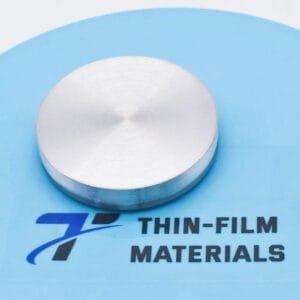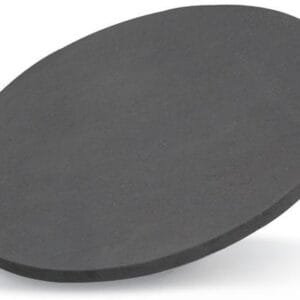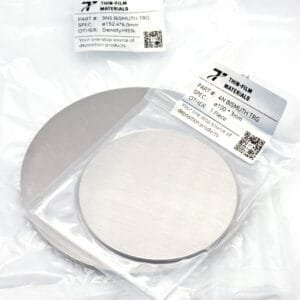Bismuth Manganate Sputtering Target Description
Bismuth Manganate Sputtering Target (Bi3MnO3) is characterized by its superior purity and unique electrical and magnetic properties, making it highly reliable for thin film deposition applications. The combination of bismuth and manganese oxide results in a material with enhanced electrical conductivity, stability, and thermal resistance, ideal for advanced semiconductor and optoelectronic applications. Its excellent performance in high-vacuum and high-temperature conditions underscores its importance in critical thin film applications that require precise and dependable characteristics.
Related Product: Bismuth Sputtering Target, Manganate Sputtering Target
Bismuth Manganate Sputtering Target Specifications
| Chemical Formula | Bi3MnO3 |
|---|---|
| Catalog No. | ST0431B |
| CAS Number | – |
| Purity | 99.9%, 99.95%, 99.99%, 99.995%, 99.999% |
| Shape | Discs, Plates, Column Targets, Step Targets, Custom-made |
| Appearance | Yellow-Orange Metallic Target |
| Available Sizes | Dia.: 1.0″, 2.0″, 3.0″, 4.0″, 5.0″, 6.0″ Thick: 0.125″, 0.250″ |
Bismuth Manganate Sputtering Target Handling Notes
Due to the brittleness and relatively low thermal conductivity of the Bismuth Manganate alloy, indium bonding is highly recommended for optimal thermal transfer and mechanical stability during sputtering. This method helps to minimize thermal stress, enhances deposition uniformity, and prolongs the target’s lifespan during PVD processes. Proper handling and storage are essential to ensure the target maintains its quality and performance.
Bismuth Manganate Sputtering Target Application
Bismuth Manganate Sputtering Target plays a key role in the fabrication of magnetic thin films, optoelectronic devices, and semiconductor materials. Its excellent properties make it an ideal choice for:
Magnetic storage and data recording devices
Magneto-optical films
Quantum computing and spintronics applications
Optoelectronic devices and sensors
Research in rare earth and manganese oxide thin films
The combination of bismuth and manganese oxide also supports applications in optical coatings and semiconductor device manufacturing, where reliable electrical behavior and thermal stability are essential.
Bismuth Manganate Sputtering Target Packaging
At TFM, all Bismuth Manganate Sputtering Target products are carefully packaged in vacuum-sealed, anti-static bags, and cushioned with foam or shock-absorbent materials. The products are placed in protective containers to ensure safe transport, maintaining quality and safety during delivery to your sputtering system.
Get Contact
TFM offers Bismuth Manganate Sputtering Target in a variety of purities, sizes, and configurations, with custom fabrication options available to meet your specific deposition system needs. Our advanced processing ensures high-density targets with uniform grain structure, optimized for use in semiconductors, magnetic materials, optical applications, and research.
Feel free to contact us for quotes, lead times, or technical consultations.





Reviews
There are no reviews yet.